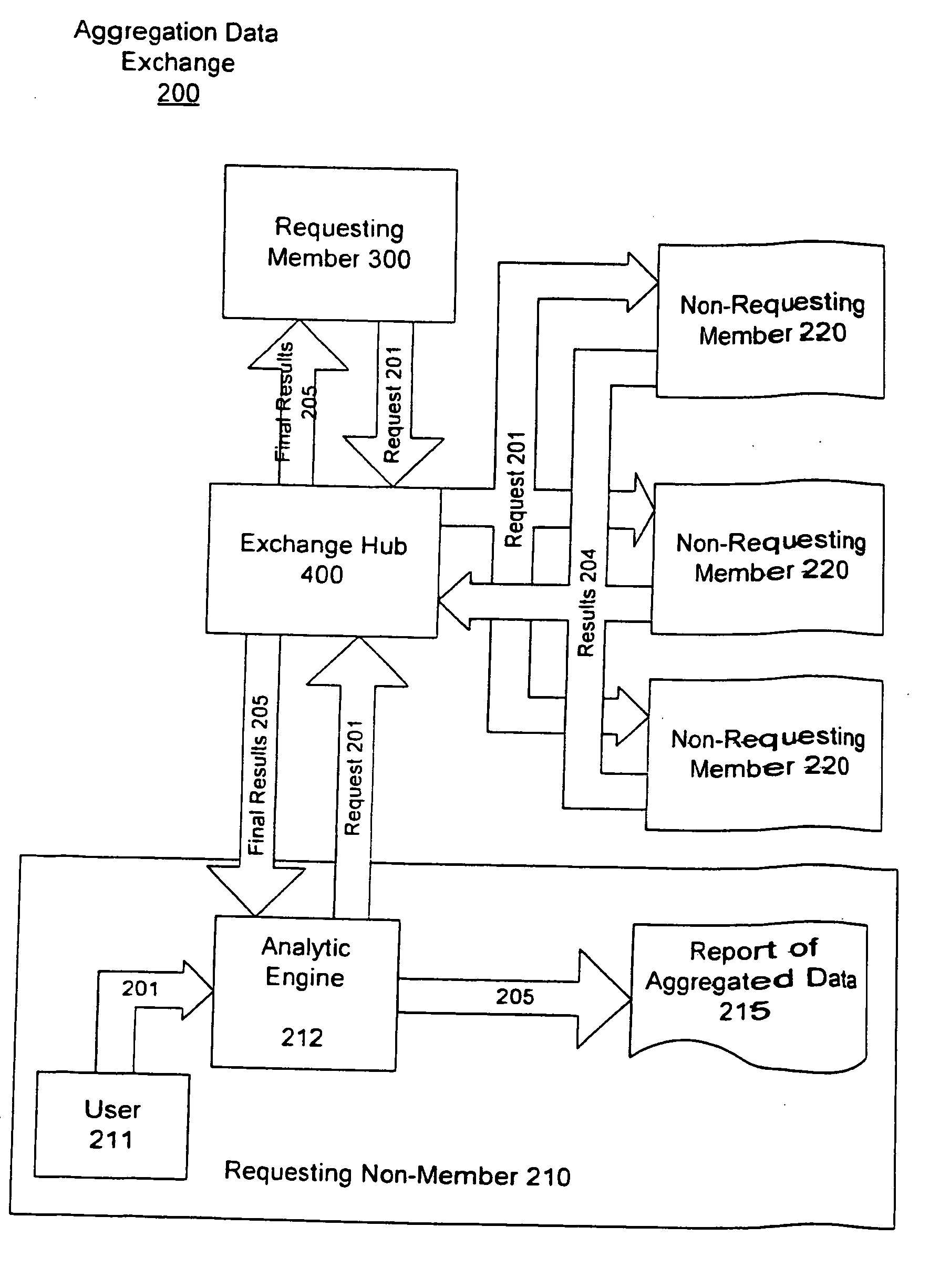System and method for aggregation and analysis of information from multiple disparate sources while assuring source and record anonymity using an exchange hub
- Summary
- Abstract
- Description
- Claims
- Application Information
AI Technical Summary
Benefits of technology
Problems solved by technology
Method used
Image
Examples
example 1
[0071] Which of the two competing brands of coronary stents (or other medical device) has the lowest complication rate? Typically, no hospital has enough data to answer the question definitively, but combining data from a number of hospitals could address. Accordingly, this type of question may be addressed using the data collection exchange 200 of the present invention. First, the question needs to be clarified and put in precise enough terms that the solution can be posed as a database query. This is a standard step, not related directly to the aggregation, but is more complicated, because the data can be represented differently at different sites. Types of questions to be defined in this example include: [0072] What events are considered complications? (e.g., consider thrombosis only) [0073] In what timeframe after implanting the stent must the event occur to be considered related? (e.g., 3 months). [0074] Are there other variables to be controlled for? (e.g., severity of illness...
example 2
[0084] The complication rates for two stents: In this case, the requester 210 / 300 wishes to know the relative complication rates of two stents, controlled for age and severity of disease. As in the previous example, the first step in the data collection and aggregation is to clarify the question. In this example, the question clarification requires specifying the strata to be used for age and severity. These criteria may differ for different requests and, consequently, may not be part of the common schema. For example, patients might be aggregated into the following age “bins” or categories: 30-40, 41-50, 51-60, 61-70, 71 and above. Similarly categories are then provided for severity of initial disease.
[0085] According to these questions at each data collection site 220, patients are counted by type of stent, age, and severity of disease. This stratification creates numerous subgroups. For example, if there are 5 age categories and three severity categories, then there are 15 subgr...
PUM
 Login to View More
Login to View More Abstract
Description
Claims
Application Information
 Login to View More
Login to View More - R&D
- Intellectual Property
- Life Sciences
- Materials
- Tech Scout
- Unparalleled Data Quality
- Higher Quality Content
- 60% Fewer Hallucinations
Browse by: Latest US Patents, China's latest patents, Technical Efficacy Thesaurus, Application Domain, Technology Topic, Popular Technical Reports.
© 2025 PatSnap. All rights reserved.Legal|Privacy policy|Modern Slavery Act Transparency Statement|Sitemap|About US| Contact US: help@patsnap.com



